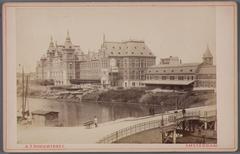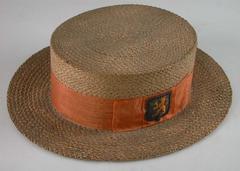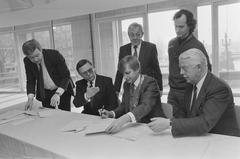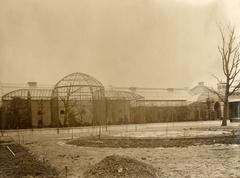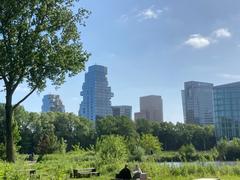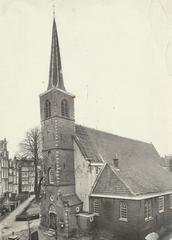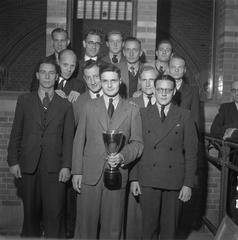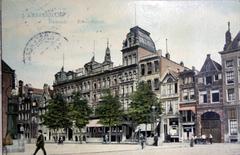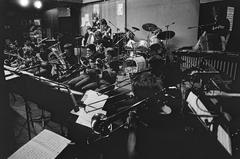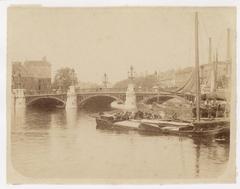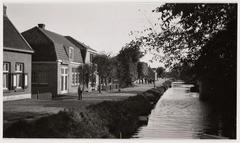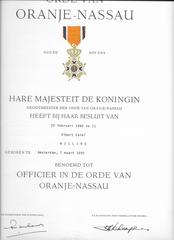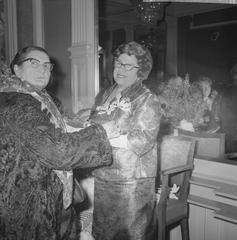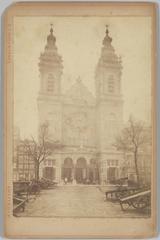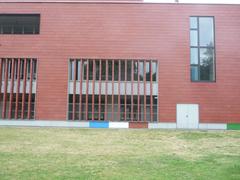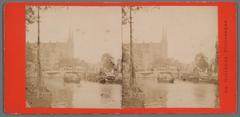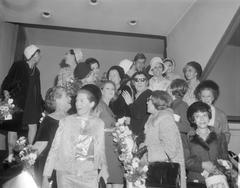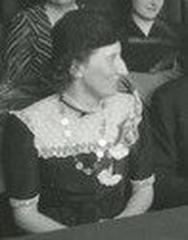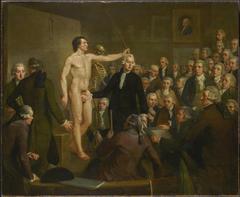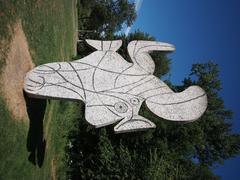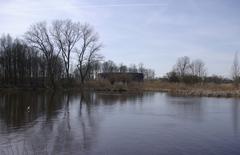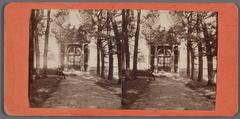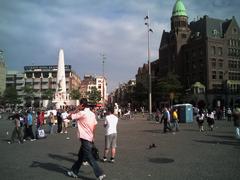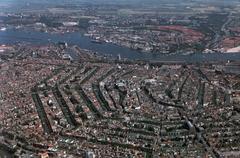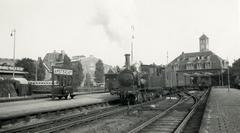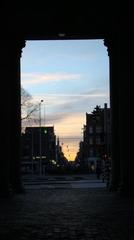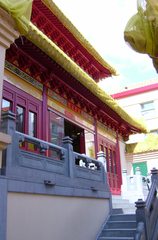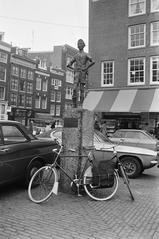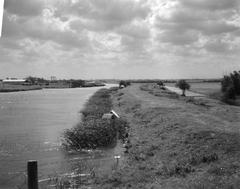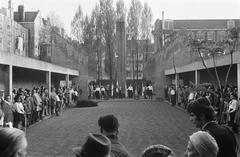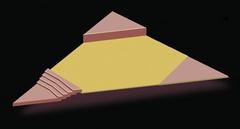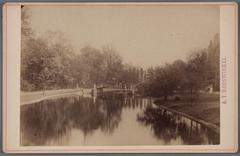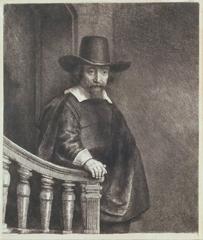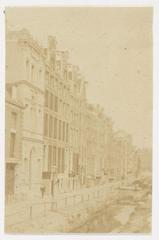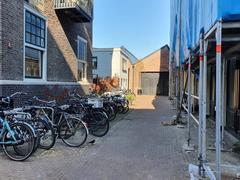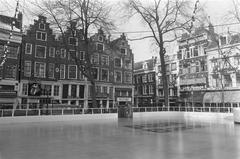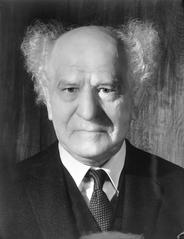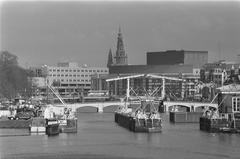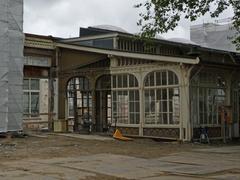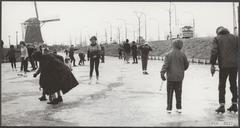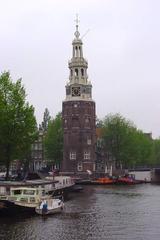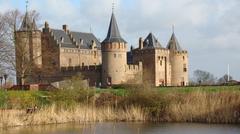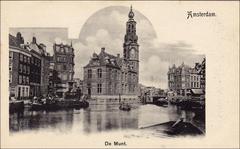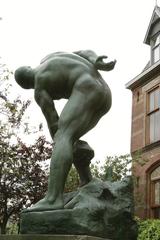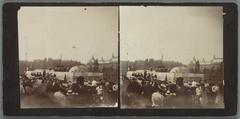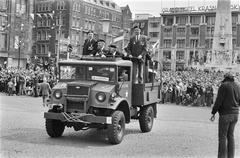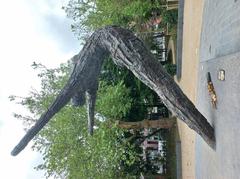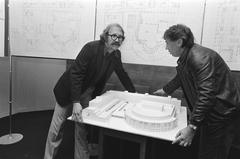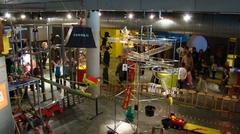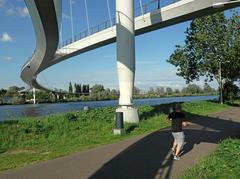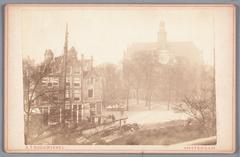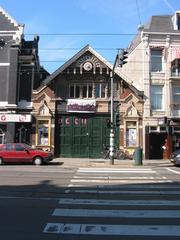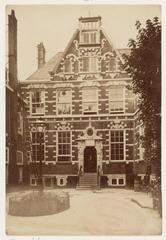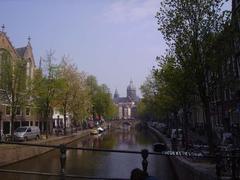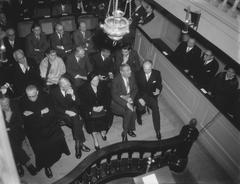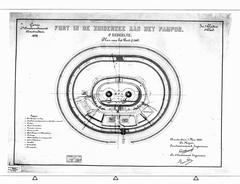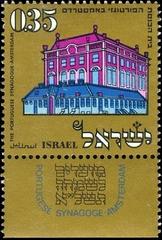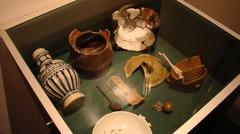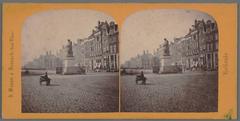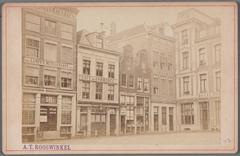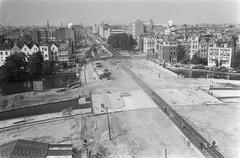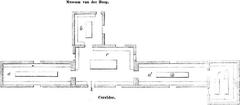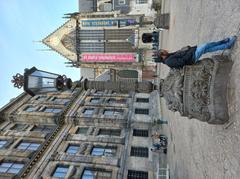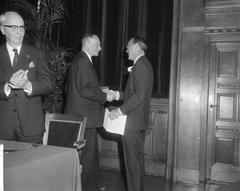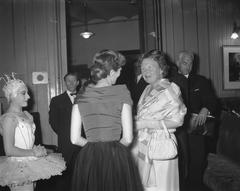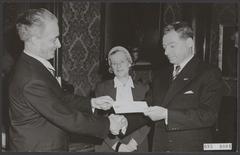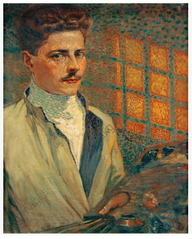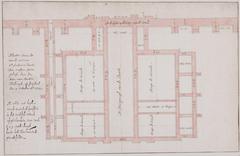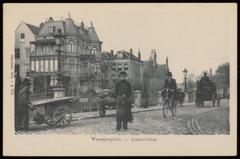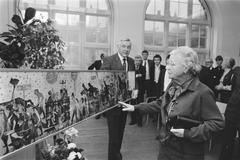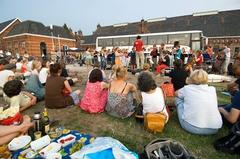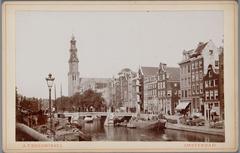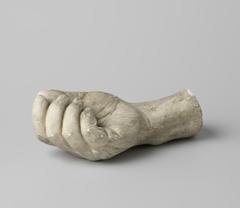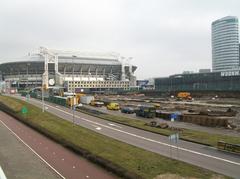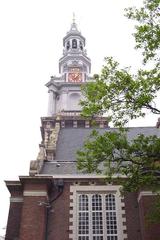
National Holocaust Names Memorial Amsterdam: Visiting Hours, Tickets, and Comprehensive Guide
Date: 04/07/2025
Introduction
The National Holocaust Names Memorial (Nationaal Holocaust Namenmonument) in Amsterdam stands as a profound and evocative tribute to the more than 102,000 Jewish, Sinti, and Roma victims from the Netherlands who perished during the Holocaust. Opened in 2021 and designed by renowned architect Daniel Libeskind, the memorial offers an immersive, reflective space where each victim is remembered individually, with their name, date of birth, and age at death inscribed on a dedicated brick. Centrally located in Amsterdam’s historic Jewish Quarter, the memorial not only serves as a place of remembrance but also as a vital educational and cultural landmark. This guide provides detailed information on visiting hours, accessibility, tickets, architectural symbolism, travel tips, and recommendations for a respectful and meaningful visit (Holocaust Namenmonument, Libeskind Studio, Amsterdam Sights).
Contents
- Introduction
- Origins and Historical Significance
- Architectural Design and Symbolism
- Site Layout and Urban Integration
- Materiality and Construction
- Symbolic Elements
- Visiting Information
- Visiting Hours and Admission
- Accessibility
- Getting There
- Guided Tours and Educational Programs
- Visitor Etiquette and Recommendations
- Cultural and Educational Importance
- Integration with Amsterdam Jewish Heritage Sites
- Visitor Experience and Digital Tools
- Frequently Asked Questions (FAQ)
- Conclusion and Visitor Recommendations
- Sources and Further Reading
Origins and Historical Significance
The National Holocaust Names Memorial arose from a collective commitment to individually commemorate each Dutch Holocaust victim, countering the anonymity imposed by the Nazis. Inaugurated in September 2021, the memorial represents a significant milestone in Dutch remembrance culture. For many families, it marks the first public inscription of relatives’ names lost during the Holocaust. The memorial stands as both a warning against intolerance and a call to uphold human rights for future generations (Wikipedia).
Architectural Design and Symbolism
Site Layout and Urban Integration
Situated along Weesperstraat in the Jewish Quarter, the memorial’s rectilinear plan aligns with Amsterdam’s urban grid and is surrounded by key Jewish heritage sites, including the Jewish Historical Museum and Portuguese Synagogue (Libeskind Studio, Amsterdam Sights). Visitors navigate a series of narrow passageways formed by two-meter-high brick walls, creating an environment of immersion and contemplation.
Materiality and Construction
- Bricks: The heart of the memorial is its 102,000 individually inscribed bricks—each bearing a victim’s name, date of birth, and age at death. An additional 1,000 blank bricks represent unknown victims, symbolizing the incompleteness of historical memory (WhiteMAD).
- Stainless Steel Volumes: Suspended mirror-finished steel elements spell out the Hebrew word לזכר (“L’zikaron,” meaning “In Memory Of”). Their reflective surfaces link the memorial, city, and visitors, encouraging personal engagement and collective remembrance.
Symbolic Elements
- Labyrinthine Pathways: The maze-like structure evokes disorientation, mirroring the loss and confusion experienced by victims and survivors.
- Personalized Bricks: Individual names transform the overwhelming statistics of the Holocaust into stories of real people, reinforcing the memorial’s educational purpose.
- Reflective Steel: The mirrored Hebrew letters invite visitors to see themselves as participants in the act of remembrance, connecting past and present.
Visiting Information
Visiting Hours and Admission
- Hours: The memorial is accessible 24 hours a day, seven days a week. Daylight visits are recommended for full appreciation and safety (Holocaust Namenmonument).
- Admission: Entry is free and no tickets are required. Donations are welcomed to support maintenance and educational initiatives.
Accessibility
- Physical Access: The site is wheelchair accessible and features smooth, level surfaces. Note: The nearest metro stop, Waterlooplein, lacks elevator service, which may affect some visitors with mobility needs.
- Digital Access: QR codes at the memorial can be scanned to locate individual names through a dedicated app, connecting visitors to the Joods Monument online database.
Getting There
- Public Transport: The memorial is easily reached by tram (Tram 14) and Metro lines 51, 53, and 54 (Waterlooplein stop), as well as by several bus routes.
- Car: Parking is available at Q-Park Waterlooplein and Q-Park Stopera (Holocaust Namenmonument).
Guided Tours and Educational Programs
While the memorial itself does not offer official guided tours, local organizations and museums in the Jewish Cultural Quarter provide Holocaust-focused tours. Educational programming, commemorative ceremonies, and annual events are held, particularly around Holocaust Memorial Day (Holocaust Namenmonument).
Visitor Etiquette and Recommendations
- Atmosphere: Maintain a respectful silence and avoid disruptive behavior.
- Photography: Permitted, but should be discreet and mindful of the site’s solemn purpose.
- Facilities: No restrooms or cafés are on-site; these can be found in the surrounding Jewish Quarter.
- Dress: As the memorial is outdoors, check the weather and dress appropriately.
- Time: Allocate at least 30–60 minutes for a thoughtful visit.
Cultural and Educational Importance
The memorial’s focus on individual names restores identity and humanity to each victim, counteracting the erasure of the Holocaust. Its design and educational programs promote tolerance, awareness, and the ongoing fight against antisemitism and discrimination. The adoption program allows visitors and supporters to “adopt” a name, supporting the memorial’s preservation and outreach (Holocaust Namenmonument).
Integration with Amsterdam Jewish Heritage Sites
The memorial is part of the wider Jewish Cultural Quarter, home to:
- Jewish Historical Museum: Chronicling Jewish life in the Netherlands.
- Portuguese Synagogue: Seventeenth-century synagogue open to visitors.
- Dutch National Holocaust Museum: Newly opened in 2024, exploring the Holocaust’s impact in the Netherlands.
- Auschwitz Monument in Wertheim Park: Another poignant site of remembrance.
- Anne Frank House: A short distance away, offering an essential perspective on Jewish wartime history (Take Walks, Amsterdam Tips).
A combined ticket is available for many Jewish Quarter attractions, but entry to the Names Memorial remains free.
Visitor Experience and Digital Tools
- Interactive Map & QR Codes: Visitors can scan QR codes to identify the location of specific names within the labyrinth, deepening personal connections.
- Virtual Tours: The official website offers digital tours and educational resources, allowing remote engagement.
- Photography: Key spots include the mirrored Hebrew letters, detailed shots of inscribed bricks, and panoramic views of the labyrinth (Amsterdam Sights).
Frequently Asked Questions (FAQ)
Q: What are the visiting hours?
A: The memorial is open 24/7, with daylight visits recommended.
Q: Is there an admission fee or need for tickets?
A: No. Admission is free, and no tickets are required.
Q: Is the memorial accessible for visitors with disabilities?
A: Yes. The site is wheelchair accessible, though some nearby public transit stops may not have elevator access.
Q: Can I find a specific victim’s name?
A: Yes. A QR code system and online database assist in locating individual names.
Q: Are guided tours available?
A: Local museums and cultural organizations offer Holocaust-themed tours, though the memorial itself does not provide official guided walks.
Conclusion and Visitor Recommendations
The National Holocaust Names Memorial in Amsterdam is a moving, essential site for remembrance, education, and reflection. Its thoughtful design, integration into the Jewish Cultural Quarter, and digital tools make it accessible and meaningful for all. Visitors are encouraged to approach the site with respect, utilize the available technology for deeper understanding, and explore the broader context of Jewish heritage in Amsterdam. For up-to-date hours, educational programs, and interactive resources, consult the official memorial website, and consider downloading the Audiala app for enhanced audio guides and event updates.
Sources and Further Reading
- National Holocaust Names Memorial official website, 2024
- Libeskind Studio, Names Monument Project Page, 2024
- Amsterdam Sights, National Holocaust Names Memorial, 2024
- Take Walks Blog, Amsterdam Jewish Quarter, 2024
- Wikipedia, National Holocaust Names Memorial (Amsterdam), 2024
- Amsterdam Tips, National Holocaust Memorial, 2024
- WhiteMAD, Holocaust Memorial in Amsterdam, 2024
- Joods Monument online database










